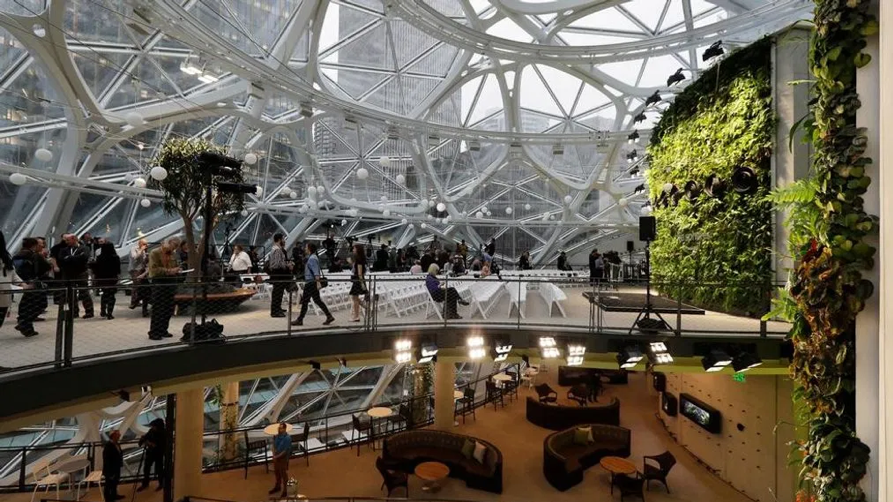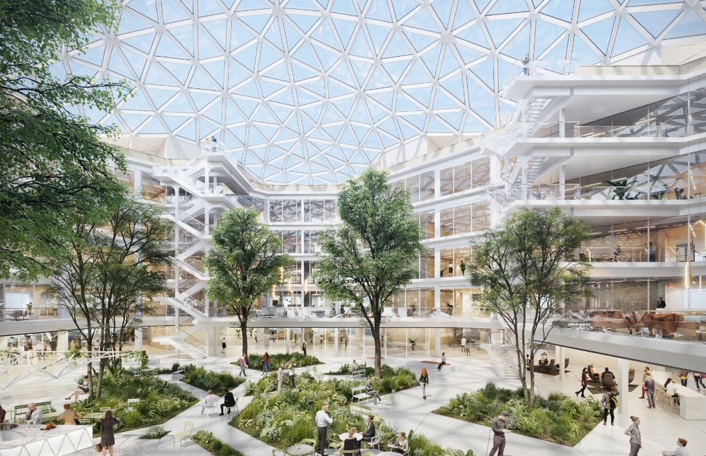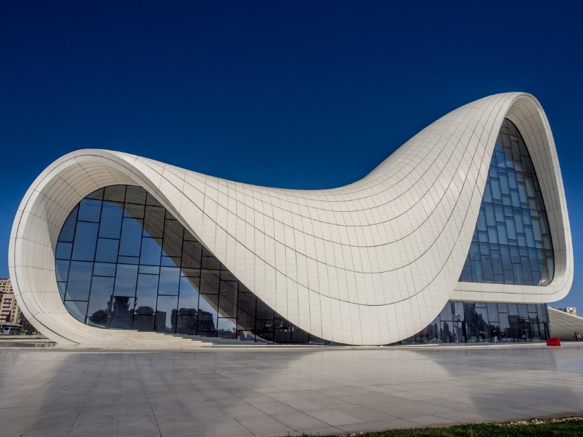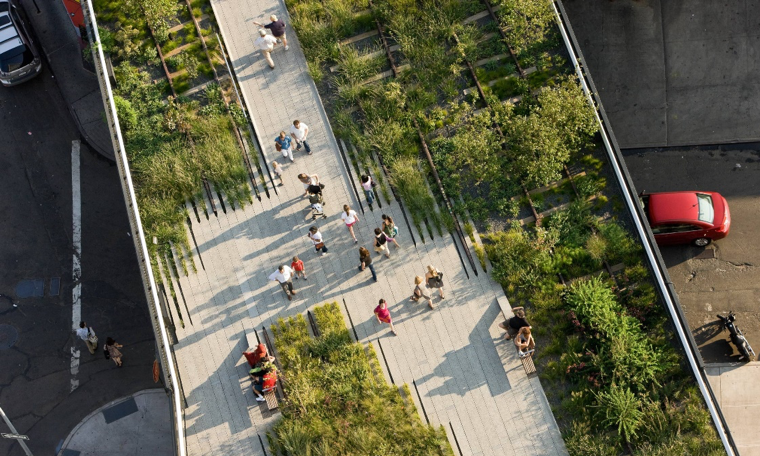Designing Tranquility: Architectural Mindfulness for Mental Well-being

Stress and anxiety have become unwelcome companions and architects are stepping into a new role as custodians of mental well-being. Architectural Mindfulness delves into how design choices can significantly impact mental health, and the unfolding trends that prioritize spaces fostering mindfulness, relaxation, and stress reduction.
Let’s explore how architects are becoming pioneers in nurturing the mind.
Understanding the Mind-Body Connection
The fusion of architectural design and mental well-being rests on the profound understanding of the mind-body connection. The concept of “healing spaces” is gaining prominence. Architects are increasingly recognizing that spaces have the power to influence emotions, moods, and ultimately, mental health.
Tip for Architects: Educate Yourself on Psychology Principles
To design with mindfulness, delve into psychology principles. Understanding how color, light, and spatial arrangements impact mental states can inform your design decisions and elevate the well-being outcome of your creations.
Multi-Sensory Experiences: Stimulating the Mind Positively
Architectural mindfulness extends beyond visual aesthetics. Engaging multiple senses in a positive way can enhance mental well-being. This trend involves thoughtful consideration of textures, aromas, and even temperature. For example, a space designed with a variety of textures, soothing scents, and comfortable temperatures can create a multi-sensory experience that promotes relaxation and mindfulness.
Tip for Architects: Consider Multi-Sensory Design
In your designs, think about the sensory experiences your spaces evoke. Incorporate textures, scents, and temperature considerations to create environments that engage multiple senses positively.
Biophilic Bliss: Integrating Nature into Architectural Design
The trend of biophilic design—integrating natural elements into the built environment. The notion is simple yet profound. Humans have an innate connection to nature, and incorporating greenery, natural light, and even water features not only enhance aesthetics but also creates a calming atmosphere conducive to mindfulness.
From office spaces adorned with indoor plants to residential complexes with lush green courtyards, the trend of biophilic design is flourishing. By creating environments that cater to the human psyche, architects are becoming stewards of mental well-being.
Example: The Amazon Spheres, Seattle
The Amazon Spheres, a workplace in Seattle, is an exemplar of biophilic design. With its abundant greenery, diverse plant species, and natural light streaming through the glass dome, it creates a workplace that blurs the lines between nature and architecture, promoting a sense of calm and connection.

Tip for Architects: Embrace Biophilic Elements Creatively
In your designs, integrate nature-inspired elements like water features, plants, and ample natural light in innovative ways. Whether it’s a rooftop garden, indoor plants, or large windows with a view, these features not only elevate the aesthetic appeal but also contribute to a sense of calm and connection to the natural world.
Spaces that Breathe: Mindful Ventilation and Lighting
Ventilation and lighting are more than functional aspects of a space; they are subtle influencers of mental well-being. Circadian-centric design, acknowledging the impact of light on our biological rhythms, is gaining prominence.
Architects are paying meticulous attention to creating spaces that breathe, ensuring optimal airflow and natural light. Proper ventilation not only impacts physical health but also contributes to a sense of freshness that can alleviate stress. Similarly, well-designed lighting that mimics natural daylight can positively affect mood and sleep patterns.
Example: The Edge, Amsterdam
The Edge, a sustainable office building in Amsterdam, prioritizes natural light. Its smart lighting system adjusts throughout the day to mimic the changing hues and intensity of natural sunlight, promoting a dynamic and health-conscious work environment.

Tip for Architects: Prioritize Ventilation and Natural Lighting
When designing spaces, consider the placement of windows, ventilation systems, and the use of lighting that replicates natural daylight. These elements contribute to an environment that promotes mental and physical health.
Serenity in Silence: Solutions for Noise Reduction
The relentless buzz of urban life can be overwhelming. Recognizing the need for quietude, architects are addressing the need for spaces that provide respite from noise. Noise reduction strategies are becoming integral to mindful design. From sound-absorbing materials to strategic spatial planning, and even nature-inspired sounds to mitigate noise. Creating spaces where silence becomes a precious commodity; a sanctuary for the mind to unwind.
Example: The Heydar Aliyev Center, Baku
The Heydar Aliyev Center, designed by Zaha Hadid, is a marvel of architectural acoustics. Its sweeping, undulating surfaces not only captivate the eye but also contribute to a space where noise is sculpted, creating an atmosphere of tranquility.

Tip for Architects: Integrate Noise Reduction Strategies
Explore materials that absorb sound, strategically design spaces that minimize noise pollution, and consider incorporating natural sounds or white noise where appropriate. A quiet environment can be a sanctuary for mental well-being.
Architectural Wellness Retreats: Nurturing the Mind and Body
As the world grapples with the escalating demands of modern life, a new trend is emerging—Architectural Wellness Retreats. Architects are envisioning and designing spaces that go beyond traditional notion retreats, prioritizing mental and physical well-being. These havens, whether nestled in nature or integrated into urban landscapes, aim to provide individuals with a sanctuary to unplug, rejuvenate, and reconnect with themselves.
Example: Aro Ha Wellness Retreat, New Zealand
Aro Ha, set amidst the pristine landscapes of New Zealand, is a prime example of an architectural wellness retreat. Its sustainable design, combined with awe-inspiring views, provides a sanctuary where individuals can rejuvenate their minds, bodies, and spirits.

Tip for Architects: Holistic Design for Retreats
For architects venturing into designing wellness retreats, prioritize holistic approach. Consider the integration of spa facilities, meditation spaces, nature-centric design, and comfortable accommodations to provide a comprehensive experience for mental and physical rejuvenation.
Urban Oases: Architectural Solutions for City Dwellers
Architectural wellness retreats need not be confined to remote locations. Urban oases are emerging as a response to the need for mental well-being within bustling cities. Rooftop gardens, meditation pods, and wellness-centric urban planning are redefining the relationship between urban living and mental well-being.
Example: The High Line, New York City
The High Line, an elevated park in Manhattan, repurposes an old rail track into a serene urban escape. It integrates greenery, art installations, and walking paths, offering city dwellers a space to escape the urban hustle and find moments of calm.

Tip for Architects: Urban Wellness Integration
Consider how your urban projects can incorporate elements of wellness. Rooftop gardens, green spaces, and design features that encourage relaxation can contribute to mental well-being amidst the urban chaos.
The Future of Mindful Architecture: Challenges and Opportunities
While the trends in architectural mindfulness show promise, challenges persist. Balancing the aesthetic and functional aspects of design with the imperative for mental well-being requires careful consideration. Architects face the challenge of navigating codes, regulations, and client expectations. Yet, within these challenges lie opportunities for architects to be advocates for mental health, shaping guidelines that prioritize the well-being of occupants.
Tip for Architects: Advocate for Mental Well-being in Design
Engage in conversations with clients, policymakers, and the public about the importance of mental well-being in architectural design. Advocate for guidelines that prioritize mental health considerations.
Conclusion: Building a Mindful Tomorrow
In architectural design, the focus on mental well-being is both a responsibility and an opportunity. Architects wield the power to shape environments that positively influence the mind, fostering mindfulness, relaxation, and stress reduction. As we move forward, the challenge lies in embracing these trends, overcoming obstacles, and crafting spaces that not only please the eye but nurture the soul. Let architectural mindfulness be the cornerstone of a future where every built environment contributes to the well-being of its inhabitants.
